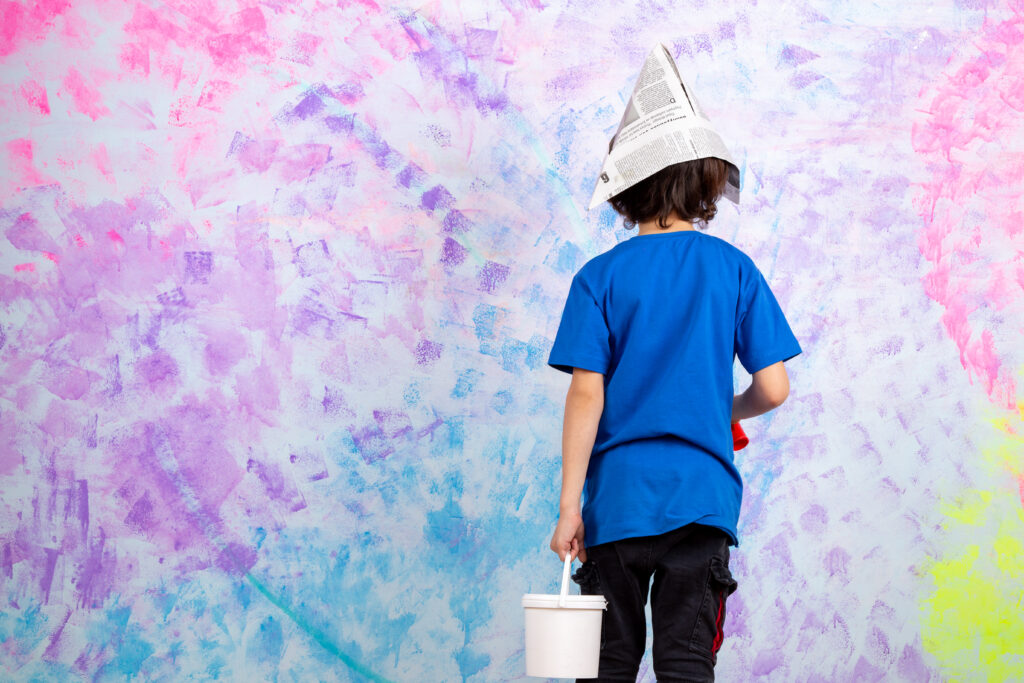
Introduction:
Wall painting is a transformative aspect of home improvement that holds the power to breathe life into any space. With a brush in hand and a palette of colors at your disposal, with your ability to create strokes of masterpieces on walls for shaping the ambiance, mood, and personality of your home. Through this guidance, we’ll explore the nuances of wall painting, from color selection to techniques that can turn your walls into canvases of creativity.
While an accent wall is intended to stand out, it should harmonize with the room’s overall color scheme. Consider using a hue that is a shade or two deeper than the surrounding walls. This subtle contrast adds depth and visual interest without overwhelming the space. Alternatively, explore complementary or contrasting colors to infuse energy and personality into the room.
Essential Reminders: Key Points to Remember
Choosing the Right Palette wall painting:
The first step in any wall painting endeavor is selecting the right colors. This decision goes beyond personal preference; it’s about understanding how colors interact with light and space. Cool tones like blues and greens can evoke a sense of calm, making them ideal for bedrooms and bathrooms. Warmer hues like reds and yellows can infuse energy into social spaces like living rooms and kitchens. Neutral tones provide versatility and allow for easy adaptation to changing decor.
Creating Accent Walls:
An accent wall is a strategic use of color that serves as a focal point in a room. By selecting a bold or contrasting shade, you draw attention to a specific area, instantly adding depth and visual interest. Consider using techniques like color blocking, geometric patterns, or textured finishes to further enhance the impact of your accent wall. In the realm of interior design, a well-executed accent wall can be the pièce de resistance that transforms a room from mundane to extraordinary.
Avoid overcrowding the space with competing elements. Keep décor minimal and let the accent wall shine, serving as a backdrop for select furnishings or artworks that enhance its allure. This design technique, achieved through strategic wall painting, allows for the creation of a focal point that captivates and enchants. In this guide, we will explore the art of accent walls, from choosing the perfect hue to implementing various painting techniques that add depth and character to your space.
Exploring Techniques and Finishes:
Beyond choosing colors, exploring various painting techniques can elevate your walls to new heights. Techniques like sponge painting, stenciling, and faux finishes can add texture and depth, creating a dynamic visual effect. Venetian plaster, for instance, imparts a luxurious, marble-like texture that exudes elegance and sophistication. Beyond color, texture plays a pivotal role in accent wall success. Techniques like stenciling, geometric patterns, or even textured wallpapers can be employed to create a dynamic visual effect. Venetian plaster or faux finishes offer a luxurious touch, while shiplap or bead board paneling introduce a tactile element that exudes charm.
Choosing the Ideal Canvas:
Selecting the right wall for your accent is the first step in this transformative process. Opt for a wall that naturally draws the eye or one that complements the room’s existing focal point, such as a fireplace or a bed’s headboard. Keep in mind that architectural features like alcoves, niches, or wainscoting can also serve as excellent canvases for your accent.
Strategic Furniture Arrangement:
Accent walls work best when they’re complemented by thoughtful furniture placement. Arrange key pieces such as sofas, beds, or artwork in a way that highlights the accent wall without overwhelming it. This creates a sense of balance and ensures that the focal point remains the star of the show. Art decor like antique pieces, clocks, collages, picture frames, diy decor, valuable presents and memories.
Preparation and Execution:
Proper preparation is key to a successful wall painting project. This includes cleaning the walls, filling any cracks or holes, and applying a primer to ensure even paint absorption. When it comes to execution, invest in quality brushes, rollers, and painter’s tape to achieve clean, precise lines. Take your time, allow for adequate drying between coats, and embrace the process as a creative endeavor.
Conclusion:
Wall painting is a powerful tool in the realm of home improvement, offering endless possibilities for personal expression. By understanding color theory, utilizing techniques, and approaching the project with patience and care, you can transform your living spaces into true reflections of your style and taste. So, pick up that brush and let the walls tell your unique story.
Mastering the art of accent walls through strategic wall painting opens up a world of design possibilities. Whether you choose to highlight a unique architectural feature or create a statement piece from scratch, this technique has the power to redefine the ambiance of any room. So, armed with a brush and a vision, embark on a journey of transformation, and let your walls tell a story of creativity and style.
